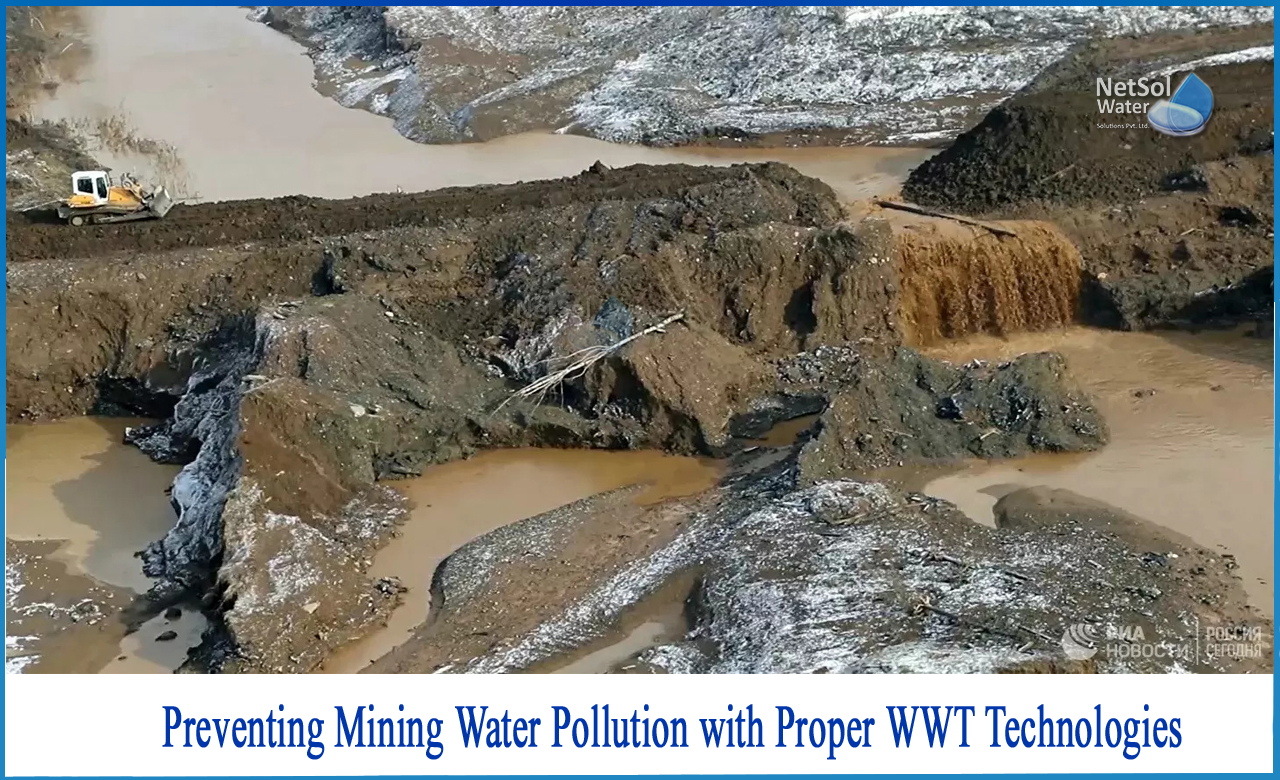How to Preventing Mining Water Pollution with proper WWT technologies?
All mines must close at some point, whether due to depletion or social and political causes, but mine closures frequently reveal design flaws. They have the potential to drastically alter the surrounding land, people, and water resources. However, putting in place an adequate water-management system ahead of closure can mitigate or even reverse many of the worst effects.
Lacking a post-closure water management strategy might result in a slew of negative consequences, including:
1: Soil structure and fertility deterioration
2: Changes in hydrology
3: Contaminant leaching issues from end-pit lakes and tailings continue to be a problem
4: Poverty and job losses
5: Deterioration of social services and infrastructure
Mine closure has been used interchangeably with mine abandonment in numerous circumstances.
In India, there are hundreds of thousands of abandoned mines or mining features, with little information on which mines may pose a threat to drinking water supplies.
Mine Closure: A New Approach
Mine closure data is scarce, and often focuses on the physical rather than the social and economic consequences. The “International Council on Mining and Metals (ICMM)”, under new leadership, has proposed a paradigm for mine closure that begins with serious consideration not when mining finishes, but at the planning stage. It continues throughout the mine's life, with Government, industry, and community involvement taking into account social, economic, and environmental factors. Engagement of stakeholders and the community as a whole must be meaningful.
Wastewater remediation and mitigation is just one of many wastewater treatment scenarios that can be considered ahead of time to avoid problems down the road in mining.
Consider the following scenario:
For temporary workforce housing camps, domestic wastewater treatment can convert sewage into recycled water that can be used for landscaping irrigation or dust control.
Surface water runoff from mines, as well as toxic wastewater generated during coal and ore processing and can be treated and discharged into surface or groundwater. Desalination is possible even with saline brine from coal mining.
Mining that is environmentally friendly!
The ongoing discovery of fresh oil, coal, and mineral reserves, greater recycling of materials, and technological advancements have all but eliminated fears about non-renewable resource depletion.
Despite the fact that mining takes place on a relatively small area of land, the associated infrastructure and pollution from mining activities have the potential to affect ecosystem health and reduce ecosystems' ability to provide the goods and services required for human and environmental well-being.
Purification of air and water, as well as the decomposition of waste materials, are all services that might be jeopardised when ecosystems are overburdened by pollution. A healthy environment is acknowledged as a "pillar" of sustainable development for future generations.
Lowering inputs: Water
At mine sites, water is used for a variety of purposes. Mining operations, especially in arid regions, can affect both the quantity and quality of water available downstream for aquatic ecosystems and other industrial and municipal water users by diverting surface water and pumping groundwater.
Numerous novel water conservation measures are being developed and used to reduce water use in many mining zones as a result of water constraint.
Lowering outputs: Waste
Mine waste consists of solid waste, mine water, and air particles, all of which have a wide range of compositions and potential for pollution of the environment. Waste management plans are essential in order to select and build appropriate storage facilities for the vast volumes of waste produced at most mine sites, in addition to mitigating soil, water, and air contamination.
It is well acknowledged that preventing pollution is more cost-effective and efficient than cleaning up after it has occurred. Among the methods for reducing and eliminating waste in the production of minerals and metals are:
• Using more environmentally friendly production methods
• Technologies for environmental control
• Using trash as a source of raw materials, as well as
• Process re-engineering to reduce the quantity of waste created.
Water management tactics are used to limit the amount of wastewater produced and, if necessary, to treat it before releasing it.
How can Netsol Water help?
Netsol Water is a significant water and wastewater treatment firm in India, offering WTP, WWTP, STP, ETP and RO Plant manufacture,among other services. We are committed to providing our valued customers with hands-on service, expert counselling, and training. Every environmental problem and its management have a solution in us.
Netsol Water is Greater Noida-based leading water & wastewater treatment plant manufacturer. We are industry's most demanding company based on client review and work quality. We are known as best commercial RO plant manufacturers, industrial RO plant manufacturer, sewage treatment plant manufacturer, Water Softener Plant Manufacturers and effluent treatment plant manufacturers. Apart from this 24x7 customer support is our USP. Call on +91-9650608473, or write us at enquiry@netsolwater.com for any support, inquiry or product-purchase related query.



